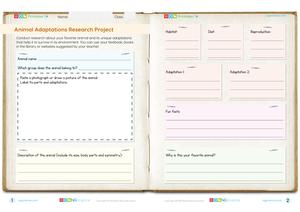Begin the lesson by introducing the fascinating journey of the Arctic tern, known for its incredible migration from the Arctic to the Antarctic and back.
Go to the LessonLearning Objectives
- Understand the migration patterns and distances traveled by the Arctic tern.
- Explain why the Arctic tern migrates and the benefits of its migration strategy.
- Describe how Arctic terns adapt their migration routes based on weather patterns and food availability.
- Identify the primary diet of the Arctic tern and how its feeding habits are influenced by migration.
Introduction and Hook
Engage students with a brief discussion on why animals migrate, setting the stage for exploring the Arctic tern's unique migration patterns.
Direct Instruction
Explain the migration patterns and distances traveled by the Arctic tern, highlighting its adaptation strategies.
Guided Exploration
Discuss with students how Arctic terns adapt their migration routes based on weather patterns and food availability.
Encourage students to explore the primary diet of the Arctic tern and how its feeding habits are influenced by migration.
Hands-On Activity
Conduct a mapping activity where students trace the migration route of the Arctic tern on a world map, identifying key stopover points.
Independent Practice
Assign students to write a short essay on the benefits of the Arctic tern's migration strategy, using evidence from the lesson.
Encourage students to create a visual presentation on how Arctic terns adapt to changes in their environment during migration.
Check for Understanding
Conduct a class discussion to assess students' understanding of the Arctic tern's migration and its adaptation strategies.
Use formative assessment techniques such as exit tickets where students summarize key points about Arctic tern migration.
Review and Reflection
Review the key concepts of the lesson, emphasizing the migration patterns, diet, and adaptation strategies of the Arctic tern.
Encourage students to reflect on how the Arctic tern's migration can inspire human understanding of adaptation and survival.
Assessment and Extension
Administer the 'Animal Adaptations Research Project' assessment to evaluate students' understanding of adaptations in different animals.
For extension, students can explore the 'Living in Groups' assessment to understand the benefits of social structures in animal survival.
Encourage students to take the unit quiz to test their comprehension of the entire unit.
Try the Quiz



